- Clone
- RMV-7 (See other available formats)
- Regulatory Status
- RUO
- Other Names
- αV integrin, Vitronectin Receptor, Integrin αV chain, ITGAV
- Isotype
- Rat IgG1, κ
- Ave. Rating
- Submit a Review
- Product Citations
- publications
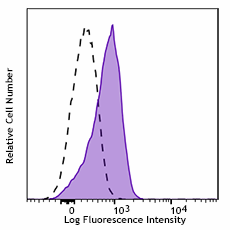
-

C57BL/6 mouse bone marrow granulocytes stained with CD51 (clone RMV-7) purified (filled histogram) or rat IgG1, κ purified isotype ctrl (open histogram) followed by anti-rat IgG PE.
| Cat # | Size | Price | Quantity Check Availability | Save | ||
|---|---|---|---|---|---|---|
| 104109 | 100 µg | 168€ | ||||
| 104110 | 1 mg | 542€ | ||||
CD51 is a 140 kD protein, also known as αV integrin, vitronectin receptor, and integrin αV. It is a member of the integrin family, expressed on activated T cells, polymorphonuclear granulocytes, platelets, blastocysts, and osteoclasts. CD51 forms heterodimers by association with integrins β1, β3, β5 or β6; these complexes then act as receptors for multiple extracellular matrix proteins (ECM). The αv integrin heterodimers have varied functions in development, stimulation/activation and homeostasis. The primary ligands for CD51 complexes are fibronectin, fibrinogen, vitronectin, thrombspondin, von Willebrand factor, and CD31. The RMV-7 antibody has been reported to block binding of CD51 to vitronectin, fibronectin, and CD31 in some cell types, as well as blocking LAK cell cytotoxicity.
Product DetailsProduct Details
- Verified Reactivity
- Mouse
- Antibody Type
- Monoclonal
- Host Species
- Rat
- Immunogen
- BALB/c mouse IL-2-activated killer (LAK) cells
- Formulation
- 0.2 µm filtered in phosphate-buffered solution, pH 7.2, containing no preservative.
- Endotoxin Level
- Less than 0.01 EU/µg of the protein (< 0.001 ng/µg of the protein) as determined by the LAL test.
- Preparation
- The Ultra-LEAF™ (Low Endotoxin, Azide-Free) antibody was purified by affinity chromatography.
- Concentration
- The antibody is bottled at the concentration indicated on the vial, typically between 2 mg/mL and 3 mg/mL. Older lots may have also been bottled at 1 mg/mL. To obtain lot-specific concentration and expiration, please enter the lot number in our Certificate of Analysis online tool.
- Storage & Handling
- The antibody solution should be stored undiluted between 2°C and 8°C. This Ultra-LEAF™ solution contains no preservative; handle under aseptic conditions.
- Application
-
FC - Quality tested
IP, Block - Reported in the literature, not verified in house - Recommended Usage
-
Each lot of this antibody is quality control tested by immunofluorescent staining with flow cytometric analysis. For flow cytometric staining, the suggested use of this reagent is ≤ 1.0 µg per million cells in 100 µL volume. It is recommended that the reagent be titrated for optimal performance for each application.
- Application Notes
-
Additional reported applications (for the relevant formats) include: immunoprecipitation1, and blocking1-3 of CD51 adhesion and LAK cell cytotoxicity. The Ultra-LEAF™ purified antibody (Endotoxin <0.01 EU/µg, Azide-Free, 0.2 µm filtered) is recommended for functional assays (Cat. Nos. 104109 & 104110).
- Application References
-
- Takahashi K, et al. 1990. J. Immunol. 145:4371. (IP Block)
- Narumiya S, et al. 1994. Int. Immunol. 6:139. (Block)
- Piali L, et al. 1995. J. Cell Biol. 130:451. (Block)
- Delpino MV, et al. 2012. J. Leukoc Biol 91:285. PubMed.
- Product Citations
-
- RRID
-
AB_2819797 (BioLegend Cat. No. 104109)
AB_2819798 (BioLegend Cat. No. 104110)
Antigen Details
- Structure
- Integrin family, associates with integrins β1, β3, β5 or β6, 140 kD
- Distribution
-
Activated T cells, polymorphonuclear granulocytes, blastocysts, osteoclasts
- Function
- Adhesion
- Ligand/Receptor
- Fibronectin, fibrinogen, vitronectin, thrombspondin, von Willebrand factor, and CD31
- Cell Type
- Granulocytes, Mesenchymal Stem Cells, Osteoclasts, T cells
- Biology Area
- Angiogenesis, Cell Adhesion, Cell Biology, Costimulatory Molecules, Immunology, Innate Immunity, Stem Cells
- Molecular Family
- Adhesion Molecules, CD Molecules
- Antigen References
-
1. Barclay AN, et al. 1997. The Leukocyte Antigen FactsBook Academic Press.
2. Maxfield SR, et al. 1989. J. Exp. Med. 169:2173.
3. Piali L, et al. 1995. J. Cell Biol. 130:451. - Gene ID
- 16410 View all products for this Gene ID
- UniProt
- View information about CD51 on UniProt.org
Related Pages & Pathways
Pages
Related FAQs
- Do you guarantee that your antibodies are totally pathogen free?
-
BioLegend does not test for pathogens in-house aside from the GoInVivo™ product line. However, upon request, this can be tested on a custom basis with an outside, independent laboratory.
- Does BioLegend test each Ultra-LEAF™ antibody by functional assay?
-
No, BioLegend does not test Ultra-LEAF™ antibodies by functional assays unless otherwise indicated. Due to the possible complexities and variations of uses of biofunctional antibodies in different assays and because of the large product portfolio, BioLegend does not currently perform functional assays as a routine QC for the antibodies. However, we do provide references in which the antibodies were used for functional assays and we do perform QC to verify the specificity and quality of the antibody based on our strict specification criteria.
- Does BioLegend test each Ultra-LEAF™ antibody for potential pathogens?
-
No, BioLegend does not test for pathogens in-house unless otherwise indicated. However, we can recommend an outside vendor to perform this testing as needed.
- Have you tested this Ultra-LEAF™ antibody for in vivo or in vitro applications?
-
We don't test our antibodies for in vivo or in vitro applications unless otherwise indicated. Depending on the product, the TDS may describe literature supporting usage of a particular product for bioassay. It may be best to further consult the literature to find clone specific information.
Other Formats
View All CD51 Reagents Request Custom Conjugation| Description | Clone | Applications |
|---|---|---|
| Biotin anti-mouse CD51 | RMV-7 | FC |
| PE anti-mouse CD51 | RMV-7 | FC |
| Purified anti-mouse CD51 | RMV-7 | FC,IP,Block |
| TotalSeq™-A1008 anti-mouse CD51 | RMV-7 | PG |
| Ultra-LEAF™ Purified anti-mouse CD51 | RMV-7 | FC,IP,Block |
| TotalSeq™-C1008 anti-mouse CD51 | RMV-7 | PG |
| TotalSeq™-B1008 anti-mouse CD51 | RMV-7 | PG |
Compare Data Across All Formats
This data display is provided for general comparisons between formats.
Your actual data may vary due to variations in samples, target cells, instruments and their settings, staining conditions, and other factors.
If you need assistance with selecting the best format contact our expert technical support team.
-
Biotin anti-mouse CD51
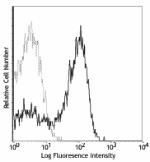
C57BL/6 bone marrow cells stained with RMV-7 PE -
PE anti-mouse CD51
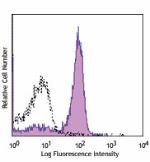
C57BL/6 mouse bone marrow cells were stained with CD51 (clon... 
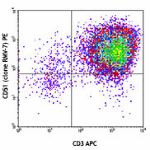
Con A stimulated C57BL/6 mouse slenocytes were stained with ... -
Purified anti-mouse CD51
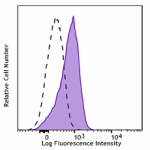
C57BL/6 mouse bone marrow granulocytes stained with CD51 (cl... -
TotalSeq™-A1008 anti-mouse CD51
-
Ultra-LEAF™ Purified anti-mouse CD51

C57BL/6 mouse bone marrow granulocytes stained with CD51 (cl... -
TotalSeq™-C1008 anti-mouse CD51
-
TotalSeq™-B1008 anti-mouse CD51
 Login / Register
Login / Register 










Follow Us